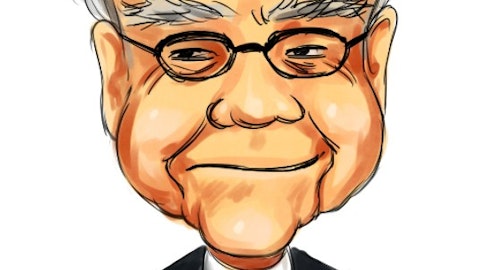
McDonald’s will also post calorie information voluntarily ahead of next year’s reform, which may have an impact on sales of its flagship products. The fast food chain’s top five products account for over 25% of its sales, but have been criticized by some for their health consequences. The Big Mac (550 calories), french fries (230 cal. small, 500 cal. large), hamburger (250 cal), cheeseburger (300 cal), and chicken McNuggets (470 cal. for 10 piece) make up this “fab five,” so to speak. While there is no research that posting calories drives or flees traffic, the company hopes that it will help customers make better choices.
Other changes to McDonald’s menu have occurred through its new product offerings. McCafe’s brand of cold and hot drinks, which began in New Zealand, is now a $1 billion dollar industry in the U.S. Moreover, customers are demonstrating an increased demand for nutritious alternatives to traditional side options. McDonald’s has taken notice to this trend and evolved its happy meals to include fruit, vegetable or dairy products, and in U.S., kid-sized fries. The company has also highlighted fruits and grains on its menu.
In the U.S., its wholesome starch breakfast campaign bundles products that are 300 calories or less so they are easier for customers to find. From McDonald’s point of view, the company believes that healthy customers will be happy customers, and happy customers will be returning customers. Now, a major worry of some analysts is that new items, such its bevy of beverage options, might make menus too complex. It appears, however, that McDonald’s recognizes these concerns, as the company has proclaimed it will improve its efforts to streamline menu options going forward.
Fisher Asset Management owns the most McDonald’s shares among its peers in the hedge fund industry. Ken Fisher, the fund’s manager, seems confident that McDonald’s will cash in on its international expansion and menu makeover. Fisher purchased over 5.4 million shares of McDonald’s between the first and second quarter of 2012. Fisher isn’t the only hedge fund manager to notice McDonald’s; the company was hedge funds’ top pick in the restaurant industry at the end of Q2, as 35 funds reported a position in the stock. Other prominent McDonald’s bulls are Jim Simons, Ken Griffin, Steven Cohen, and Richard Driehaus.
From a valuation standpoint, McDonalds is relatively cheap in relation to its peers. The company trades at a price-to-earnings ratio of 17.1, and has an EBITDA multiple of 10.45. Both valuations are below the likes of Yum! Brands, Inc. (NYSE:YUM), which has a P/E of 20.9 and an EV/EBITDA of 11.86; The Wendy’s Company (NASDAQ:WEN), which has a P/E of 130.47, but an EV/EBITDA of 8.59 (the only exception); Dunkin Brands Group Inc. (NASDAQ:DNKN), which has a P/E of 68.5 and an EV/EBITDA of 17.15; and Starbucks Corporation (NASDAQ:SBUX), which has a P/E of 28.53 and an EV/EBITDA of 16.15.
Interestingly, McDonald’s five year compound annual growth rate (CAGR) of 4.6% is lower than Yum! Brands at 5.7% (which is also among hedge funds’ top restaurant picks), Starbucks at 8.5%, and Wendy’s at 14.4%. Looking at return on assets (ROA) and return on equity (ROE), McDonald’s has the highest ROA among its peers at 15.87%, and the second highest ROE at 37.93%.
To recap: McDonald’s stock is cheap in relation to its competitors, as the company faces strong headwinds that may adversely affect its financial health going forward. Austerity measures in Europe, higher commodity costs in the U.S., and slowing growth in Asia all leave investors unsure about McDonald’s ability to grow. Nevertheless, the fast food chain has strong partnerships with franchisees and suppliers, enormous size and scale, and it continues to improve its understanding of its customers’ wants and needs. Click here to view the company’s full profile on Insider Monkey.




